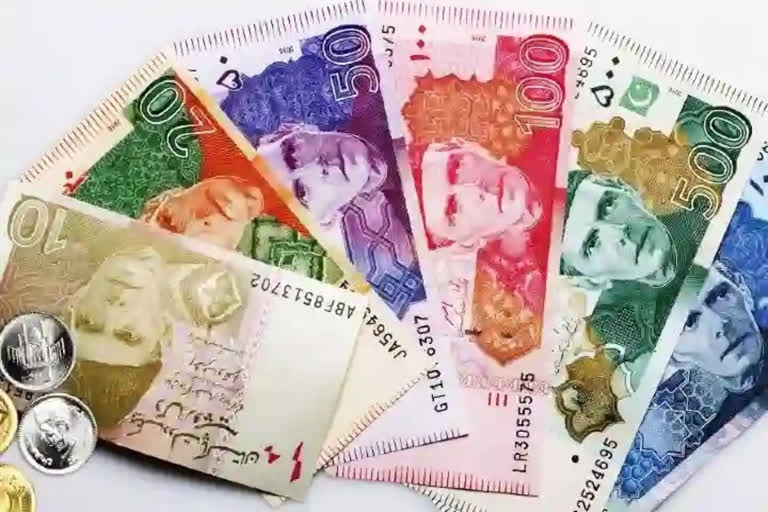Islamabad: Pakistan received only USD 5.6 billion in foreign loans during the first half of current fiscal year, equal to about one-fourth of the annual budget estimate, due to the cash-starved country's failure to take timely decisions about reviving the IMF loan programme, according to media report on Saturday.
Data compiled by the Ministry of Economic Affairs showed that foreign loan disbursements from July to December 2022 stood at a mere USD 5.6 billion, the Express Tribune newspaper reported, adding that the disbursements were not enough to finance the maturing foreign debt, making a severe dent in the foreign exchange reserves held by the central bank.
The key reason for the low disbursements was the government's failure to ensure the timely completion of the ninth review of the IMF programme. As a consequence, the receipt of USD 5.6 billion was equal to only one-fourth of the annual budget estimate of USD 22.8 billion. The IMF on Thursday announced that it would send its mission to Pakistan for talks but the set of conditions listed in its statement suggested that the government would have to go the extra mile to conclude negotiations by February 9.
Pakistan received just USD 532 million in loans in December, which were not sufficient for making major repayments. In the past seven days, the country paid USD 828 million to Chinese financial institutions. As a result, the official foreign exchange reserves slipped to USD 3.1 billion. About 44 per cent of the loans received in December came from the Asian Development Bank (ADB), which gave USD 231 million. So far, the ADB has remained the largest lender with disbursement of USD 1.9 billion, which is one-third of the annual estimate.
The IMF has assessed Pakistan's gross financing needs for FY23 at USD 34 billion and another USD 6 billion for increasing the foreign currency reserves' cushion, which takes total borrowing to USD 40 billion. However, the government has budgeted only USD 22.8 billion in foreign loans for fiscal year 2022-23. Pakistan's borrowing options have remained limited after the international credit rating agencies downgraded its outlook to negative and debt rating to junk status. This has increased the country's borrowing cost in addition to virtually closing the doors to floating Eurobonds, the report said.
Against the annual estimate of USD 7.5 billion, Pakistan has only received USD 200 million in foreign commercial loans in the current fiscal year, the report said, quoting sources. The government now expects it will receive USD 6.3 billion in commercial loans, which appears to be on the higher end. Pakistan had budgeted USD 2 billion in sovereign bond-based borrowing, but the plan did not materialise due to the poor credit rating and expected high-interest cost. The government had also expected a receipt of USD 3 billion from the IMF, which was later increased to USD 4 billion.
It had also hoped to get loans of USD 1.6 billion under the most expensive Naya Pakistan Certificates. So far, USD 190 million, or 11 per cent of the annual estimate, has been received. The government this week revised the interest rates on these debt instruments and also lowered the investment limit to USD 1,000 in desperation to get loans from wherever possible, the report said.
For the current fiscal year, the government has estimated inflows of USD 7.7 billion in loans from multilateral agencies. In six months, USD 3.3 billion, or 44 per cent, has been disbursed, it said. The disbursements by the multilateral agencies were better than the half-year estimate, thanks to the ADB. In the first six months of FY23, the World Bank disbursed about USD 691 million, 26% of the annual estimate, it added.
A World Bank spokesperson told The Express Tribune this month that the bank board may consider RISE-II loan of USD 450 million in the next fiscal year. The Bank website showed that another loan of USD 600 million had been delayed to the next fiscal year. Besides, the Islamic Development Bank (IDB) gave USD 176 million against the annual estimate of over USD 1.2 billion.
At the Geneva conference, the IDB announced USD 4.2 billion in loans but, according to sources, USD 3.6 billion was part of its regular oil financing operations that too was calculated thrice, the report said. Saudi Arabia disbursed USD 600 million in an oil credit facility against the annual estimate of USD 800 million. Among the bilateral creditors, China gave USD 55 million, France USD 8.6 million, Germany USD 4.5 million and South Korea USD 19 million, it said. (PTI)



